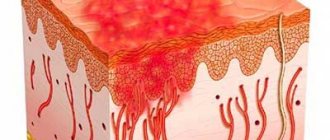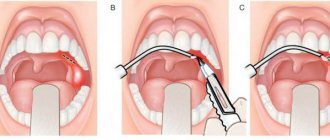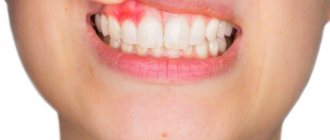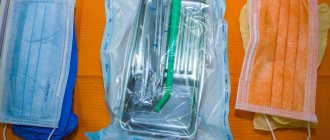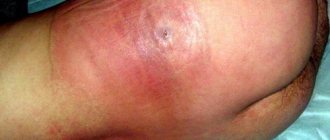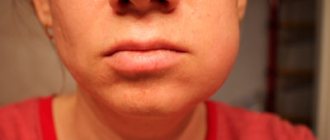Surgeon
Bohyan
Tigran Surenovich
Experience 36 years
Surgeon of the highest category, Doctor of Medical Sciences, member of the International Association of Surgeons, Gastroenterologists and Oncologists
Make an appointment
An abscess is an accumulation of purulent contents in various tissues. Purulent inflammation is usually caused by a bacterial infection. In this case, in the process of melting the tissue, a cavity is formed. The occurrence of an abscess is caused by bacteria entering the tissue from the outside - through abrasions and injuries or from other infected tissues and organs. This disease differs from other similar diseases in the formation of a capsule that prevents the spread of inflammation.
Based on the location of the pus, there are superficial accumulations in the subcutaneous fatty area and deep ones inside organs and deep tissues. Depending on the method of penetration of pathogenic microorganisms, there are exogenous accumulations (from the external environment) and endogenous (migration within the body of one person).
Symptoms and signs
Regardless of the location of the purulent accumulation, the symptoms of an abscess are the same:
- intoxication – fever, chills, weakness, malaise, nausea, vomiting, poor appetite, muscle and joint pain, headaches;
- superficial location - redness and swelling of the skin directly above the site of accumulation, pain on palpation or during movement;
- disruption of the functioning of the damaged organ or related tissues.
A chronic abscess does not have symptoms of an acute inflammatory process. Deeply located accumulations have only general signs of intoxication and are detected by instrumental diagnostics. The most common locations of an abscess are:
- inside the bones - the main symptom is pain from physical activity or when the weather changes;
- Lung abscess is manifested by shortness of breath and weak breathing. A lung abscess is often confused with pneumonia;
- in the abdominal cavity and liver is accompanied by signs of any disease of this organ;
- in the brain causes seizures and loss of coordination;
- prostate abscess causes pain when urinating;
- a throat abscess causes cough spasms and pain;
- Bartholin gland abscess and others.
Cold occurs without signs of intoxication and appears in immunodeficiencies. Natechny eliminates the presence of an inflammatory process in tissues. Acute abscess has more pronounced symptoms compared to other forms.
Are you experiencing symptoms of an abscess?
Only a doctor can accurately diagnose the disease. Don't delay your consultation - call
Treatment methods. Modern methods (opening and drainage of the pathological process)
With a scalpel
Boils, carbuncles, hidradenitis, abscess after pre-treatment with antiseptics are opened using a scalpel, followed by removal of necrotic masses and treatment of wounds with disinfectant solutions. After cleansing, the wound is drained.
CO2 laser
This method is based on carbon dioxide and is widely used in the removal of purulent-inflammatory processes, with minimal burns. After this intervention, the skin does not form scars or depigmentation. This method has virtually no contraindications.
Radio wave method using the Surgitron apparatus
An ideal method for the treatment of boils, carbuncles, abscesses, hidradenitis and purulent wounds. The method is based on the effect of high-frequency waves on the affected area. Bloodlessly removes all pathological tissue with micron precision. After the intervention there is no swelling, redness and no scars.
Local physiotherapy
Local physiotherapy is aimed at increasing the skin's resistance to the infectious agent. The post-operation area, when exposed to physiotherapeutic procedures, quickly forms granular tissue with an obstacle to tissue sclerosis.
Systemic physical therapy (intravenous ozone therapy, ILBI, intravenous ultraviolet blood irradiation)
This procedure is appropriate for repeated furunculosis, carbunculosis and post-infectious complications. Autohemotransfusion using treated venous blood using special technology gives excellent results in case of relapses of pyodermal origin. There is regeneration of blood cells and an impulse to strengthen the immune system.
Causes of occurrence and development
The main cause of an abscess is a bacterial infection that has entered the tissue from the outside world. Bacteria enter the body due to microtraumas that violate the integrity of the skin. Such injuries include cuts and minor abrasions/scratches/damage received during shaving or hair cutting, manicure or pedicure, and others. At the same time, if dirt or small particles in the form of a splinter get in, the likelihood of a purulent accumulation increases.
The occurrence of an accumulation of pus can occur for other reasons for an abscess:
- migration of infection from the primary source of infection;
- festering hematomas and cysts;
- surgical manipulations – violation of sanitary rules in the form of unsterile instruments;
- disturbances during the administration of drugs and preparations, for example, disturbances in concentration during vaccinations.
The abscess develops further under the influence of reduced immunity or poor circulation in the area of the abscess.
What diseases are there?
Staphylococcal and streptococcal infections include:
- boils,
- carbuncles,
- hidradenitis,
- abscesses,
- purulent wounds with damage to the integrity of the skin.
The most common ways of charging are your own skin, skin folds, subungual area, nasopharyngeal mucosa, as well as contact with an infected person. Reduced immunity is a predisposing factor in the occurrence and development of purulent infections.
Boils
A furuncle is an inflammatory process of the hair follicle of the skin. Staphylococcus aureus is the cause of the disease. Clinically, a boil looks like this: the appearance of a pustule in the form of tension and soreness of the skin in the hair area, with redness of the affected area. The affected area has a clear rounded outline and over time takes on a dark purple color with a purulent grain in the middle. The size of boils reaches from 0.5 cm to 1.5 cm. Favorite localization: neck, face and back. But it can develop on any part of the body.
Carbuncles
A carbuncle is the same boil that involves several hair follicles and sebaceous glands in the process. It has many heads with purulent contents. The cause of development is: staphylococci and streptococci. In terms of the size of the skin lesion, the carbuncle is larger (up to 2.5 cm) and clinically develops more clearly. When developing, a multi-headed carbuncle causes fever and general malaise. The favorite localization of the carbuncle is the skin of the back, shoulders and neck.
Carbuncles often give complications in the form of lymphadenitis, thrombophlebitis, meningitis and the development of sepsis.
Hidradenitis
Hidradenitis (otherwise called “bitch udder”) is a purulent inflammation of the axillary sweat glands, as well as the apocrine glands of the perineal region. The routes of transmission of infection are through lymphatic vessels or damaged skin. The clinical picture begins with the development of a dense nodule accompanied by a painful symptom; a pustule does not form at the site of inflammation and there are no necrotic masses. With myomalacia of the affected area, pus comes out in the form of a fistula. If several glands are involved in the process, they merge. Intoxication increases with increasing temperature, malaise, etc.
Abscesses
An abscess is an infectious and inflammatory process involving the skin layers and subcutaneous tissue, with the formation of a purulent “sac”. The causes of abscesses are very different: superficial and deep injuries, hematomas involving secondary infection, post-injection complications, furunculosis, carbuncles, etc. Accompanied by pain in the developmental area, as well as increased temperature and fever.
Purulent wounds
A purulent wound is damage to the integrity of the skin (deep or superficial) with the addition of staphylococcal and streptococcal infections. Wounds of this kind do not have a specific localization due to the spontaneity of the occurrence of injuries of various etiologies (mechanical, chemical or somatic origin).
Forms of the disease and routes of infection
An abscess can be an independent disease, but in the vast majority of cases it appears as a complication of an underlying disease, for example, purulent tonsillitis causes a peritonsillar abscess. Pathogenic microorganisms have a lot of ways to get inside - through damage to the skin as a result of injuries and cuts, from other organs and tissues that were previously infected, through non-sterile equipment during surgical procedures, and others.
Forms of the disease are classified according to the location of purulent accumulation:
- retropharyngeal abscess;
- peripharyngeal;
- peritonsillar abscess;
- subdiaphragmatic;
- soft tissues;
- periodontal;
- appendicular and others.
Risk factors
Favorable background for the appearance of abscesses are also:
- long-term diseases of the gastrointestinal tract (gastroenteritis, enteritis, colitis);
- peripheral circulatory disorders (atherosclerosis, varicose veins, postthrombophlebitis disease);
- metabolic disorders (obesity, hypothyroidism, vitamin deficiency).
Diabetes mellitus with severe damage to the blood vessels plays a particularly significant role in the development and progression of the purulent process.
Complications
In the absence of timely and adequate treatment, complications of abscesses are very dangerous for the life and health of the patient:
- phlegmon;
- neuritis;
- osteomelitis;
- internal bleeding of the walls of blood vessels;
- peritonitis,
- sepsis as a result of purulent abscess of the appendicular region;
- purulent meningitis and others.
Contacting the clinic
A purulent accumulation is fraught with dangerous consequences, therefore, if the slightest sign of the presence of an accumulation of pus in tissues or organs appears, you should immediately consult a doctor. The ideal solution would be to call an ambulance.
At (academician Roitberg’s clinic) you will receive the necessary assistance in treatment. In addition, JSC “Medicine” (academician Roitberg’s clinic) has the ability to accommodate patients in a 24-hour hospital and has the function of calling a doctor at home around the clock.
Why is an abscess dangerous?
The biggest danger is the spread of purulent inflammation to other tissues and structures of the body.
In addition to the formation of phlegmon, the above-mentioned sepsis, as well as neuritis (due to the involvement of the nerve trunk), melting of the wall of a large vessel, the transition of inflammation to bone structures and the formation of osteomyelitis can become a complication of an abscess. Any complication of an abscess threatens to result in very serious health problems, including disability and death. That is why you should not treat an abscess on your own, much less try traditional methods that are excitedly talked about on the Internet. Such amateur activities lead to very disastrous consequences, the elimination of which takes a lot of time, effort and money.
Diagnostics
Purulent accumulations located near the surface of the skin are easily diagnosed during an external examination based on characteristic signs. A throat abscess is detected during examination by an otolaryngologist.
Diagnosis of an abscess located deep inside requires special laboratory and instrumental studies:
- a biochemical blood test will show the inflammatory process in the body with an increased content of leukocytes and ESR, as well as shifts in protein fractions;
- radiography is used to detect subdiaphragmatic, intraosseous and pulmonary collections;
- Ultrasound is aimed at identifying accumulations in the abdominal cavity and liver;
- computed tomography, as an auxiliary method, detects purulent accumulations in the brain, lungs and liver, subdiaphragmatic region and inside bones and joints;
- encephalography of various forms (echo-, electro-, pneumo-) is aimed at studying the brain;
- laparoscopy and angihepatography are used as an auxiliary method for examining the liver;
- puncture of the abscess and culture of its contents are performed to determine the specific type of pathogen and its sensitivity to certain antibacterial drugs.
Most often, purulent accumulations are caused by streptococci, staphylococci in combination with various kinds of bacilli, but now other aerobic and anaerobic bacteria are also becoming widespread.
Main symptoms of soft tissue abscess
As for local symptoms, first an infiltrate without clear boundaries forms on the surface of the skin. The area of skin over the abscess quickly turns red and swollen, and begins to hurt. A few days after the “start” of the process, a fluctuation appears, indicating the accumulation of purulent contents inside the lesion. Fluctuation is determined as follows: the fingers of the right and left hands are placed in the center of the inflammation, pressure is applied to the skin, while the fingers of the right hand produce slight shocks, and the fingers of the left hand do not move; if there is liquid in the closed cavity, the points will be transferred to the left hand. And vice versa: shocks produced by the left hand will be felt by the fingers of the right.
General symptoms include a sharp deterioration in health, fever, weakness, headache, chills, lethargy, sleep disturbance, loss of appetite. All these symptoms are nonspecific and “speak” of general intoxication of the body, which occurs due to the absorption of toxins into the blood and are formed during the breakdown of the tissues of the purulent cavity. Their manifestation may also indicate the spread of a purulent process with the likelihood of developing sepsis.
Treatment
The key to successful treatment of an abscess lies in its timely detection. This is why it is so important to immediately consult a doctor if you have any symptoms.
Treatment principles:
- Only superficial purulent accumulations can be treated at home under the supervision of a doctor. All other cases require hospitalization;
- opening and drainage of the area of purulent accumulation is carried out by a surgeon; it is necessary to remove the abscess;
- drug therapy is based on taking the following drugs: antibacterial agents, antipyretics, painkillers, drugs to reduce intoxication, vitamin complexes, immunomodulators and others;
- balanced nutrition, gentle bed or semi-bed rest, and rest;
- physical therapy, physiotherapy and sanatorium-resort treatment are possible as rehabilitation measures during the recovery stage.
Special ointments are used as adjuncts in the treatment of subcutaneous fatty suppuration.
Purulent accumulations in the lungs are initially treated with broad-spectrum antibiotics, and after receiving the results of culture culture studies, adjustments are made to the medications taken. In severe cases, bronchoalveolar lavage may be performed. If there is no positive effect of classical therapy, an abscess operation is forced to remove the affected part of the organ.
Treatment of purulent accumulations in the brain is carried out using surgical methods. Contraindications for removal of accumulations, namely the location in the deep parts of the brain, necessitates washing out the purulent contents by puncture. Treatment of purulent accumulations at home using traditional medicine is unacceptable.
Treatment at the Mama Papa Ya clinic
The network of family clinics “Mama Papa Ya” offers medical services for the treatment of abscesses by a qualified surgeon. The clinic's branches are located in Moscow and Moscow Region.
Our advantages:
- quick appointment of a patient without a long wait in line;
- immediate surgical care - opening and draining the abscess in a sterile office;
- comprehensive recommendations for caring for the postoperative wound to prevent complications;
- if necessary, consultation with other specialists (gynecologist, ENT doctor, neurologist and others);
- diagnosis of internal abscesses using multislice computed tomography.
To obtain a doctor’s consultation, you must contact our manager by phone or through the feedback form.
Reviews
Good clinic, good doctor!
Raisa Vasilievna can clearly and clearly explain what the problem is. If something is wrong, she speaks about everything directly, not in a veiled way, as other doctors sometimes do. I don’t regret that I ended up with her. Anna
I would like to express my gratitude to the staff of the clinic: Mom, Dad, and me. The clinic has a very friendly atmosphere, a very friendly and cheerful team and highly qualified specialists. Thank you very much! I wish your clinic prosperity.
Anonymous user
Today I had a mole removed on my face from dermatologist I.A. Kodareva. The doctor is very neat! Correct! Thanks a lot! Administrator Yulia Borshchevskaya is friendly and accurately fulfills her duties.
Belova E.M.
Today I was treated at the clinic, I was satisfied with the staff, as well as the gynecologist. Everyone treats patients with respect and attention. Many thanks to them and continued prosperity.
Anonymous user
The Mama Papa Ya clinic in Lyubertsy is very good. The team is friendly and responsive. I recommend this clinic to all my friends. Thanks to all doctors and administrators. I wish the clinic prosperity and many adequate clients.
Iratyev V.V.
We visited the “Mama Papa Ya” Clinic with our child. A consultation with a pediatric cardiologist was needed. I liked the clinic. Good service, doctors. There was no queue, everything was the same price.
Evgeniya
I liked the first visit. They examined me carefully, prescribed additional examinations, and gave me good recommendations. I will continue treatment further; I liked the conditions at the clinic.
Christina
The doctor carefully examined my husband, prescribed an ECG and made a preliminary diagnosis. She gave recommendations on our situation and ordered additional examination. No comments so far. Financial agreements have been met.
Marina Petrovna
I really liked the clinic. Helpful staff. I had an appointment with gynecologist E.A. Mikhailova. I was satisfied, there are more such doctors. Thank you!!!
Olga
Make an appointment with a surgeon right now!
If an abscess or other purulent inflammation is suspected, the help of a qualified specialist is required who will conduct an examination, determine the type of inflammation and prescribe/conduct adequate treatment. Our clinic has an entire general surgery department, with all the conditions for performing surgical interventions on soft tissues on the same day of treatment. At the same time, the price for abscess treatment is low: anyone can use the services of our experienced surgeons. Attention to the patient, accuracy and thoroughness in performing all manipulations, the ability to avoid a noticeable scar after opening a purulent inflammation, affordable cost of services - our clinic is appreciated precisely for these advantages!
Is there inflammation? Are we waiting for your call?
Purulent gum abscess
At the initial stage of the disease, the inflammation may contain only serous exudate and be accompanied by moderate pain and swelling. Treatment of this condition can be conservative (medication) without surgery. Over time, as a result of pathological processes, pus appears at the site of inflammation, the pain increases and often becomes pulsating. In the area of one or two teeth, a purulent abscess forms on the gum, the treatment of which requires surgical intervention.
Accumulating pus contains interstitial fluid, dead immune cells and microorganisms. As the disease progresses, the amount of pus increases and the pressure inside the abscess increases, microcirculation disorders worsen. Under such conditions, the risk of infection spreading to surrounding tissues and the development of complications increases.
Types of dental abscess
- Osteomyelitis
- Phlegmon
- Tooth loss
Osteomyelitis
When pus remains in the soft tissues, complications arise. Dense formations with pus form in the bone tissues, and swelling of the lymph nodes also occurs.
Phlegmon
A life-threatening complication occurs when the infection spreads into the soft tissues of the gums. The growth of pus leads to chronic pathologies.
Tooth loss
If the infected fluid spreads to the base of the tooth, painful swelling appears, which may lead to tooth extraction.
Prevention
To prevent abscess, patients are recommended to:
- promptly disinfect and treat abrasions, wounds, injuries;
- observe the technique of performing therapeutic and diagnostic procedures;
- observe the rules of sanitation and hygiene;
- promptly treat inflammatory diseases, primary purulent processes, local foci of infection (caries, periodontitis).
This article is posted for educational purposes only and does not constitute scientific material or professional medical advice.
